Family Lycosidae (Wolf Spiders)
The family Lycosidae (wolf spiders) is a large family with a worldwide wide distribution represented by 27 genera and 104 species from South Africa of which 60 secies are endemics. Wolf spiders are widely distributed throughout the region, they are also common inhabitants of city gardens.
Life style
Wanderers (ground dwellers); most lycosids are free-running ground hunters with only a few living in burrows with trapdoors or living in a funnel-web.
Body size
3-30 mm (males slightly smaller with longer legs).
Diagnostic characters
Colour: cryptic, ranging from dull yellowish brown to grey to almost black. The carapace usually has darker lateral bands and a lighter median band running longitudinally and may extend onto the abdomen. The abdomen could also have spots or chevron markings.
Carapace: hairy, longer than wide and narrower and higher in cephalic region with the fovea longitudinal.
Eyes: Lycosids can easily be confused with Zoropsidae and Ctenidae but the eye arrangement separates them. The 8 eyes of the Lycosidae are distinctive, occurring in three rows (4:2:2), all dark in colour, of unequal size. The anterior row includes 4 small eyes in almost a straight row; second row with two large eyes and third row with two eyes of intermediate size, situated on anterolateral surface of carapace, with a slightly backward glance.
Abdomen: oval, covered with dense setae.
Legs: usually strong, of moderate length with 3 claws.
Web and retreat
Webs: absent in most,
Anomalomma and
Hippasa with typical funnel-webs.
Retreat: wandering spiders found during non-active periods below ground debris. Some species of
Lycosa and members of
Geolycosa live in silk-lined burrows.
Habitat
Wolf spiders are abundant in grassland, savanna, Nama-Karoo and Succulent-Karoo. They are frequently found in agro-ecosystems and some species are associated with fresh water.
Behaviour
Many species of wolf spiders hunt during the day, but some are nocturnal. When at rest they usually are found under stones or debris on the ground. The Lycosidae are often seen dashing from under the grass trying to escape the lawn mower or doing freestyle in the pool. Contrary to common belief, wolf spiders do not always run down their prey. Recent studies indicated that they tend towards a "sit-and-wait" strategy.
They have good vision and their sense of touch is highly developed. Eyesight plays a particularly important part in their mating activities that include waving of the pedipalps and raising of the front legs as if following a dance routine (much like the Salticidae).
The lycosid female carries her round or oval often cream-coloured egg cocoon attached to the spinnerets. The young spiderlings climb onto the mother's back after emerging from the egg cocoon and are carried around until the second moult.
Research has shown that the Lycosidae are important in agriculture, as they are efficient controlling agents of insect pests. They are harmless to man.
Lycosids are often parasitised by wasps probably because they are free roaming and do not enjoy the protection of a web. The wasps will parasitise them in one of two ways. Depending on the wasp species, the spider will either be stung and immobilized, stocked into a prepared nest, have an egg laid on it and then sealed into the nest. The wasp larva then hatches and consumes its live prey that eventually dies as the larva pupates. Secondly, a female wasp will immobilize the spider and lay the egg directly onto it. The spider continues living a normal life with the wasp larva feeding on it until the spider becomes too weak and dies. This coincides with the maturation of the wasp larva that then pupates later to emerge as the adult wasp.
Prey
A variety of insects and mites found both on the soil or plants. Important predators in agro-ecosystems.
Distribution:
While it is relatively easy to recognise a member of the Lycosidae family, identifying the genus is more difficult although this can often be deduced from the habitat in which it occurs.
Anomalomma and Hippasa are web-bound and occur in funnel webs similar to the Agelenidae. (The two families can be separated as the Agelenidae females do not carry the egg case on the spinnerets neither do they carry their young on their abdomens).
Hippasa is a fairly large dark brown spider with 2 rows of white spots on its abdomen.
Geolycosa and Lycosa are referred to as the burrowing wolf spiders. The burrow can be a cork-like trap door or a raised collar constructed with silk and bits of vegetation.
Lycosa is large, pale brown with pale brown chelicerae that turn a reddish colour when threatened.
Evippa and Zenonina occur in sandy, semi-arid regions.
Pardosa: The name is derived from the Greek "arctos" meaning "bear".
Pardosa often found in lawns and often fall into swimming pools. The absence of scopulae (tufts of hair on its feet) prevent it from climbing the smooth walls and it eventually drowns.
Pirata and Wadicosa are semi-aquatic.
Tricassa occurs on sandy beaches from Namibia to the Cape Peninsula. It is possible that females construct burrows.
Common genera:
Allocosa (17 spp.);
Arctosa (12 spp.);
Evippomma (2 spp.);
Geolycosa (8 spp.);
Hippasa (6 spp.);
Hogna (24 spp.);
Lycosa (14 spp.);
Pardosa (21 spp.);
Pirata (3 spp.);
Proevippa (9 spp.);
Pseudevippa (2 spp.);
Pterartoria (4 spp.);
Pterartoriola (4 spp.);
Trabea (8 spp.);
Zenonina (2 spp.).
Links:
Atlas of the Spiders of South Africa;
Biodiversity Explorer;
Martin R. Filmer: Southern African Spiders: An Identification Guide
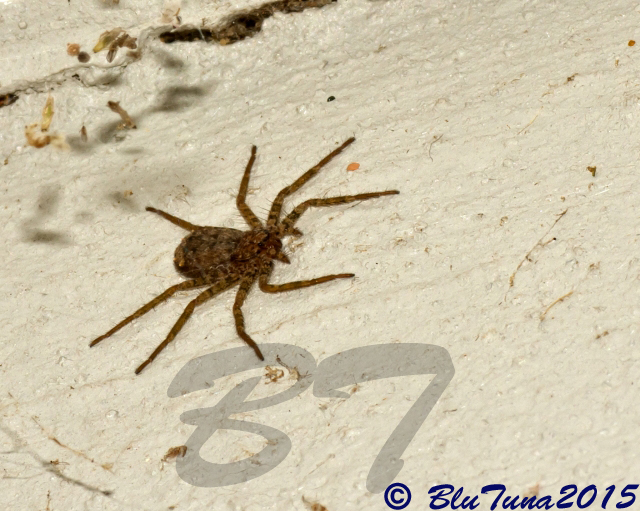 © BluTuna
© BluTuna © BluTuna
© BluTuna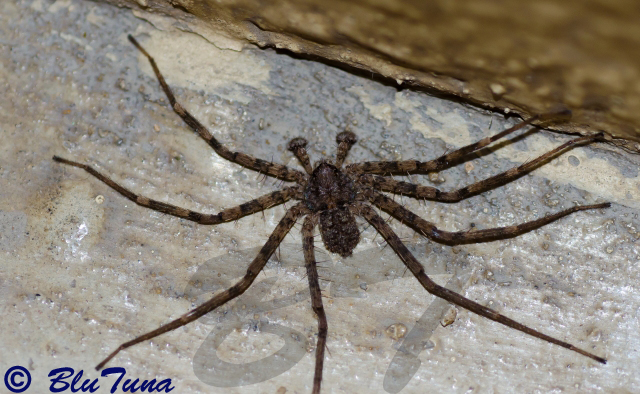 © BluTuna
© BluTuna © Mel
© Mel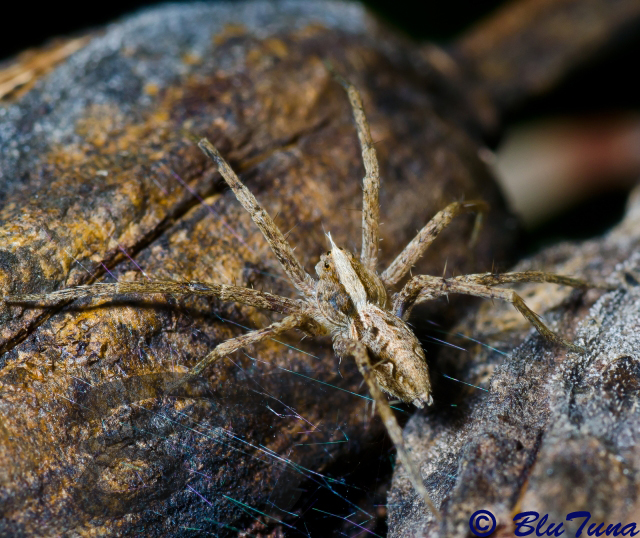

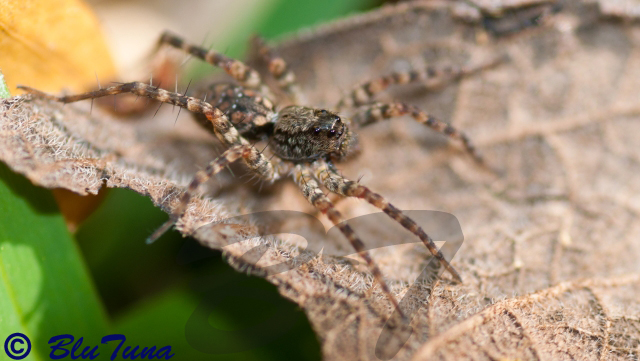 © BluTuna
© BluTuna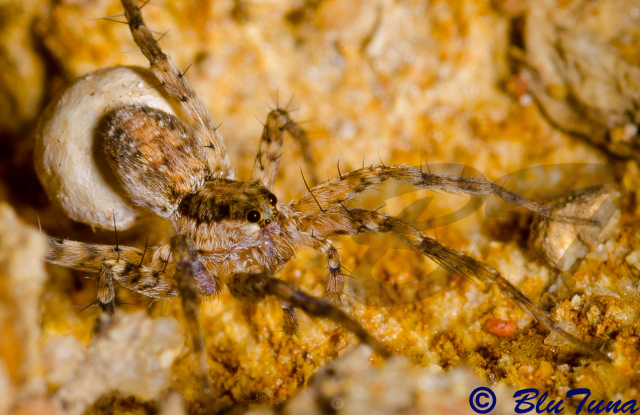 © BluTuna
© BluTuna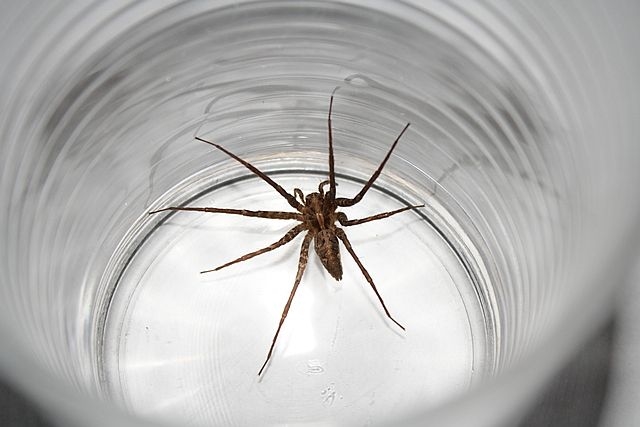 © Flutterby
© Flutterby